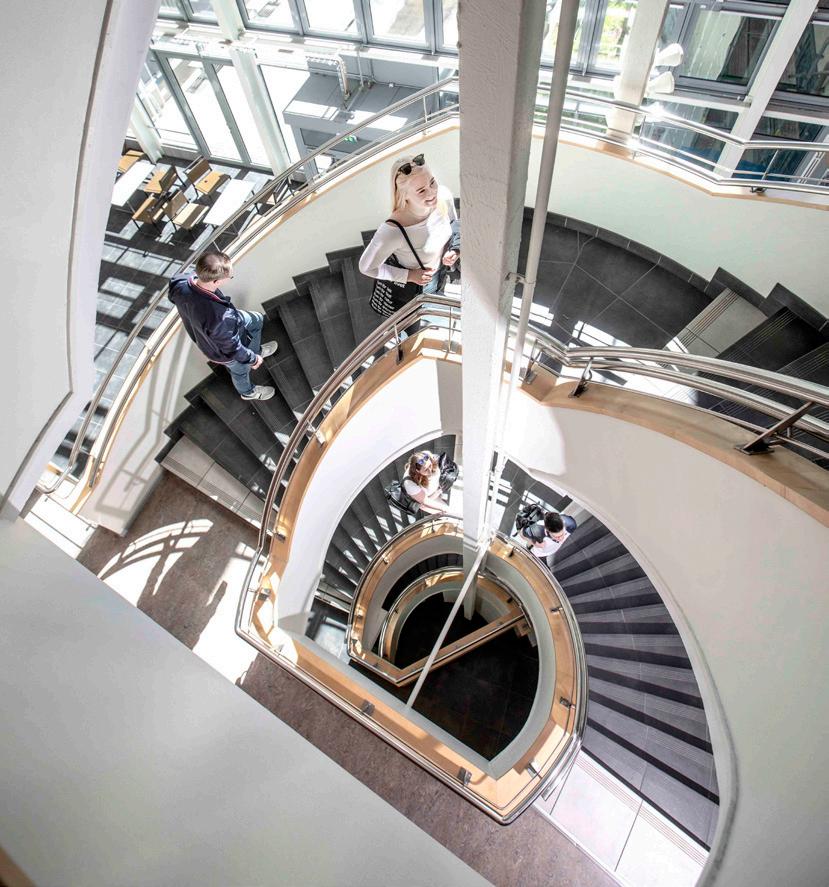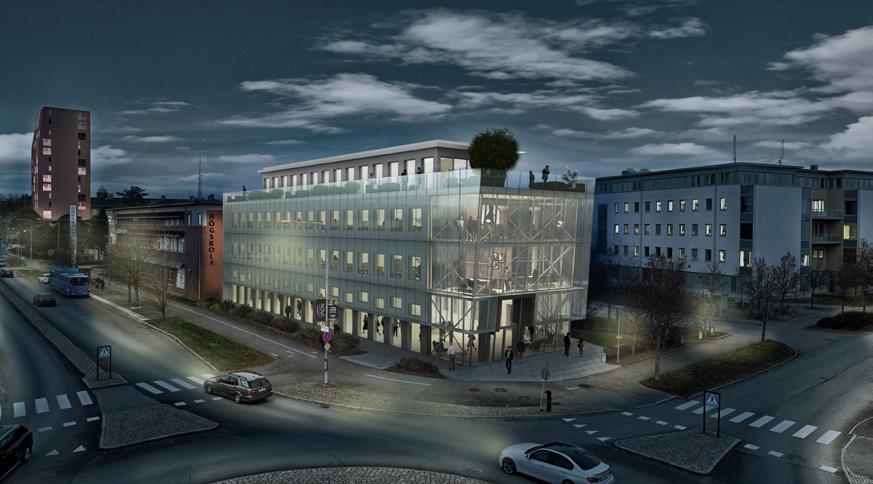
3 minute read
Current situation and challenges
THE 9 STRATEGIES OF THE CAMPUS PLAN
The strategies of the Campus Plan form the basis for the development of the area and outline the measures required in order to achieve the campus vision and impact targets.
Advertisement
• To build accommodation on campus.
• To develop a sustainable campus.
• To provide sustainable connections and parking facilities The table shows which strategies support which impact targets
2. To create creative and flexible learning areasin physical and digital environments.
5. To build accommodation on campus.
8. To develop a sustainable campus.
CAMPUS VISION
A campus where interaction is created ...
A creative, flexible campus A vibrant, accessible campus A green, sustainable campus

Vision of the possible expansion of a new collaborative environment to the west of D-building.

STRATEGY
One of the fundamental objectives of the campus development is to increase integration between education, research, research training and collaboration – collaboration with our partners as well as internally, between colleagues and across departmental lines. In order to create better conditions for this we will develop the physical environment on campus as well as the Production Technology centre. The participation of our employees and cooperation with our partners is a key part of this process.
PRIMUS “KK” ENVIRONMENT
Greater knowledge and tools are intended to make Swedish industry more competitive. This will enable industry to face the complex challenges of the future and achieve sustainable growth. Employees in working life must develop their learning in order to effectively implement innovations and adapt to changes within industry. The Primus “KK” environment is a driving force of this development. This is a collaboration between University West and working life which aims to develop new research and expertise within technology and learning. Primus connects University West’s two complete environments – Production Technology and Work-Integrated Learning (WIL) – with the three following main areas of research: Production processes, Production systems and Industrial Work-Integrated Learning (I-WIL).
Visualisation of the Primus “KK” environment, where University West and the business community collaborate within education and research.
A VENUE FOR EXTERNAL PLAYERS AND ENTERPRISE
The presence of external players on campus cements our status as Sweden’s leading WIL university. University West strives to be a dynamic, essential venue for collaboration and the exchange of knowledge between academia, business and the community. Enterprises, public service bodies, startups and other organisations shall have the opportunity to come here for work, projects, workshops and meetings. This also makes it easier for us to gain the interest of students in internships, theses or employment.
EXPANSION FOR NEW COLLABORATIVE ENVIRONMENTS
A conceivable location for the expansion of new collaborative environments is next to D-building. The University has already secured construction rights here, and the site is suitable for the creation of an easily accessible area for collaboration and innovation.
PRIORITISED PROJECTS
• To investigate external activities on campus








